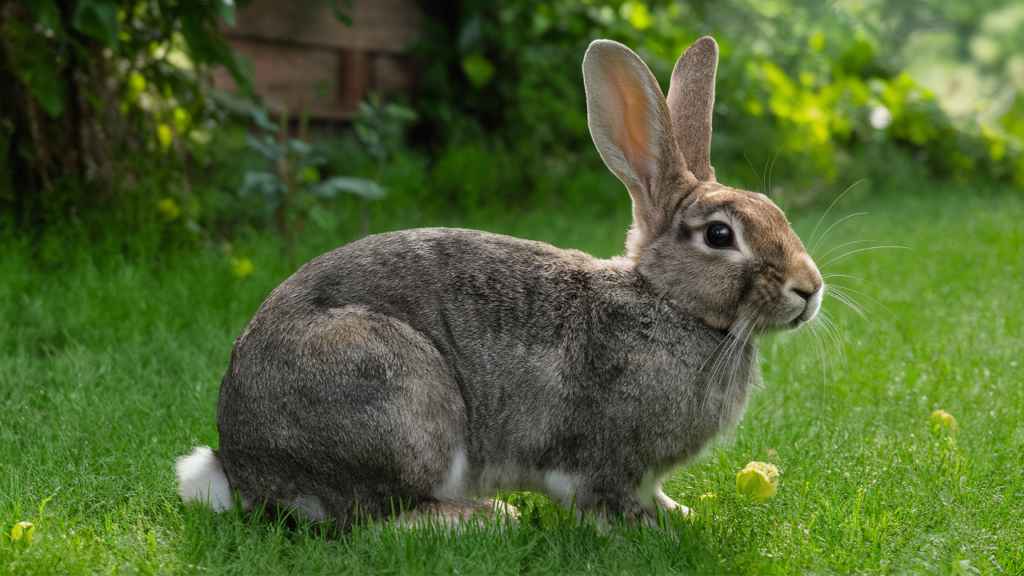Unveiling the Mythical World of Continental Giant German Rabbits
GERMAN HERITAGE USA | AFFILIATE DISCLAIMER: This post may or may not contain affiliate links which means we may receive a commission for purchases made through links. We will only recommend products that we have personally used or that we truly trust. Learn more on our Private Policy and Disclaimer Page located under our Terms Of Service tab above.
Imagine a rabbit the size of a medium-sized dog, with a gentle temperament and a love for cuddles. That’s the reality of the Continental Giant rabbit, also known as the German Giant. These majestic creatures are not your average cottontails – they’re the undisputed heavyweight champions of the rabbit world.

This article dives into the fascinating world of Continental Giants, exploring their typical size, historical origins, presence in America, and suitability as pets.
Gentle Giants: Unveiling the Mythical World of Continental Giant Rabbits
For centuries, rabbits have captured our hearts with their fluffy fur, twitchy noses, and playful personalities. But some rabbit breeds take cuteness to a whole new level, pushing the boundaries of size and temperament.

Enter the Continental Giant, both German and Flemish Giants fall under this Continental breed category are giant breeds that can challenge our perception of what a rabbit size maximum can really be.
Size Matters: Unveiling the Continental Giant’s Impressive Stature
So, just how big are these gentle giants? Continental Giants are true behemoths in the rabbit kingdom. On average, they can reach a staggering length of 4 feet (1.2 meters) and weigh a hefty 15-25 pounds (7-11 kilograms). The Guinness World Record holder, Ralph, a Continental Giant from England, tipped the scales at a whopping 53 pounds (24 kilograms)!
Their impressive size is matched by their impressive appetites. These giants can munch through a surprising amount of hay, vegetables, and specialized pellets daily.
One of the very first publicized Giant Rabbits was “Herman the German.” He was massive. Of course rabbits in Germany are also known as “hasenpfeffer” a German Rabbit Stew. Yikes!
Many say that this “Herman the German” Giant Rabbit popularized Continental Giant Rabbits as adorable pets for anyone.
When Herman first appeared on YouTube years ago, he became an instant sensation. You had to wonder how much and what did he actually eat every day?
See the original article of Herman the Giant German Rabbit by clicking here
Despite their size, Continental Giants are renowned for their docile and affectionate personalities. Often referred to as “gentle giants,” they are known to be calm, friendly, and even enjoy being cuddled.
This gentle nature makes them potentially suitable companions for families with older children who can handle their size and understand proper rabbit care.
However, it’s important to remember that every rabbit is an individual. While Continental Giants are generally known for their docility, proper socialization and training are crucial for any rabbit breed to ensure a harmonious relationship.
A Rich History: Tracing the Origins of the Continental Giant
The exact origins of the Continental Giant remain a bit fuzzy, but most rabbit historians believe they descended from the Flemish Giant, another large rabbit breed developed in Europe in the 16th century. During the 19th century, breeders in Western Europe, particularly in Germany, focused on selectively breeding Flemish Giants for even larger size, eventually giving rise to the Continental Giant breed we know today.
Originally, Continental Giants were bred primarily for meat production. However, their gentle temperament and impressive size also made them popular show rabbits in Europe.
Across the Pond: Are There Continental Giants in America?
While Continental Giants are widely recognized and popular in Europe, their presence in the United States is somewhat limited. The American Rabbit Breeders Association (ARBA) currently doesn’t recognize the Continental Giant as an official breed. This means breeders who specialize in Continental Giants are relatively uncommon in the US.

However, there are still pockets of Continental Giant enthusiasts in America. Some rabbit breeders may import these giants or selectively breed them from existing stock. If you’re interested in owning a Continental Giant in the US, it’s important to do your research and find a reputable breeder who prioritizes the health and temperament of their rabbits.
Giants as Pets: Considering the Responsibility
Continental Giants can make wonderful companions, but they are not for everyone. Their size requires a significant commitment in terms of space, food, and care. Here are some key factors to consider before welcoming a Continental Giant into your home:
- Space: These giants need ample room to exercise and roam. Ideally, they should have a large enclosure with access to a rabbit-proofed area where they can freely hop and explore.
- Diet: Continental Giants have substantial appetites. Their diet should consist primarily of high-quality hay, supplemented with fresh vegetables and specialized rabbit pellets.
- Exercise: Even though they are not known for being super active, Continental Giants still need daily exercise to stay healthy and prevent boredom. Providing them with toys and space to explore is crucial.
- Lifespan: The average lifespan of a Continental Giant is around 4-5 years, similar to other rabbit breeds.
- Grooming: While their fur is relatively short and easy to manage, Continental Giants still require regular brushing to remove loose hair and prevent matting.
- Veterinary Care: Like all pets, Continental Giants require regular checkups with a veterinarian knowledgeable about exotic pets.
The Final Hop: A Gentle Giant for Your Heart?
Continental Giants are truly unique rabbits with a gentle soul housed in an impressive frame. If you have the space, resources and love for one, there is no better pet around.
